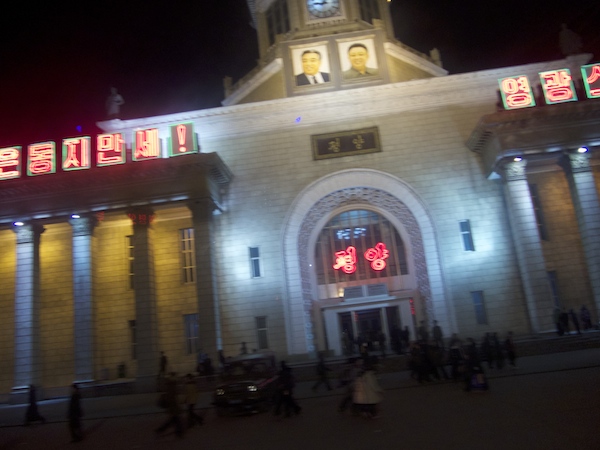
Much of South Korea had some or all of last week off work, owing to the chuseokfall harvest festival. Westerners in Seoul take the opportunity to enjoy a quieter version of the city while Koreans take the opportunity (or if you prefer, adhere to the obligation) to spend the holiday in their family’s provincial hometown. Westerners married to or otherwise involved with such Koreans discover with a start that, contrary to expectations they may have had of a cultural experience rich with tradition, families here increasingly tend to spend chuseok on their sectional sofas, having an experience rich with television. The networks, for their part, always make sure to keep the week’s programming interesting, and this year they found themselves blessed with additional abundance in the form of a political event to analyze, re-analyze, and then analyze the analyses of: the third inter-Korean summit in Pyongyang, capital of North Korea.
Not so long ago, relatively few knew what Pyongyang really looked like. At the peak of my own onetime fascination with North Korea, I had a hard time finding pictures of anything more interesting than looming concrete symbols like Monument to Party Founding and Juche Tower, the menacingly incomplete Ryugyong Hotel, and blue-uniformed traffic ladies standing sternly in the middle of otherwise deserted intersections. Now a single Google search turns up copious amounts of Pyongyang media, up to and including thorough visual documentation of its subway system, which those of us fascinated by North Korea used to half-suspect of being nothing more than a set piece orchestrated to impress visiting foreigners. Now even GQposts galleries of streets shots taken in Pyongyang — and, since everyone knows that the government deliberately uses the capital as a prosperous showpiece, other parts of the country as well.
With no desire to see the officially approved sights — standard guided tours, as I understand, schedule a great deal of time at the feet of those Pyongyang monuments — I’ve never looked into traveling up north myself. The geopolitical situation has made it nearly impossible for Americans such as myself to do it now anyway, but in longtime Seoul expatriate circles you’ll find plenty of Westerners, of various nationalities, who’ve been not just once but many times. The attractions of Pyongyang fare poorly in comparison to those of Seoul, of course, even with all the Chinese money poured into the former of late, but those who have spent time in both cities often make a point of how much more colorful the poorer, emptier, more repressive one looks by contrast. Why, they wonder, does the capital of South Korea — the better Korea, as we Westerners know it, indeed the good Korea, the one to which all those starving Northerners must dream of escaping in between brainwashing sessions — look so gray?
Read the whole thing at the Los Angeles Review of Books.